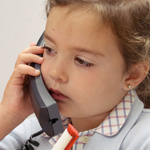Caring for Your Child’s Nosebleed
Published on
Health Tip of the WeekPublished on
Health Tip of the Week Nosebleeds aren’t just the result of an unfortunate run-in with the playground bully. While a knock to the nose certainly can cause a bleed, nosebleeds usually occur when the protective lining of the nose is dry or irritated. Most often they are caused by picking, blowing too hard or breathing dry air.
Nosebleeds aren’t just the result of an unfortunate run-in with the playground bully. While a knock to the nose certainly can cause a bleed, nosebleeds usually occur when the protective lining of the nose is dry or irritated. Most often they are caused by picking, blowing too hard or breathing dry air.
Here are some other causes of nosebleeds:
Applying a few basic first-aid measures will usually quickly take care of the problem:
Rarely do nosebleeds require a visit to the doctor. However, if your child experiences the following, you should call his pediatrician:
Contributed by: Patrick S. Pasquariello, MD
Categories: Weekly Health Tips, Injuries
Are you looking for advice to keep your child healthy and happy? Do you have questions about common childhood illnesses and injuries? Subscribe to our Health Tips newsletter to receive health and wellness tips from the pediatric experts at Children's Hospital of Philadelphia, straight to your inbox. Read some recent tips.